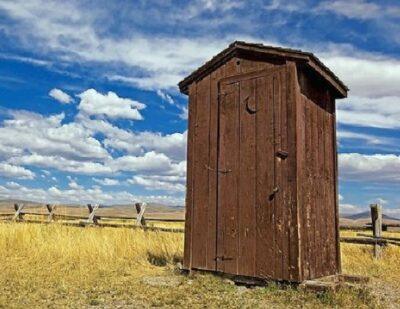|
Listen To The Article
|
In the minds of many Americans, outhouses are a symbol of the old west, an antique concept that predates electricity and running water, and a commodity that, for most, is long forgotten. Unless, of course, you are one of the lucky few who understands the benefits and has come to love taking a walk outside.
While it can be difficult for some people to recognize the positive aspects of owning an outhouse, once you have lived it, you may find it harder still to abandon the practice. Whether you live in a dry cabin or you simply enjoy the idea of stepping out and away from other people, outhouses are most assuredly not a structure lost in time, and for off-gridders who love them and the innumerable designs that make each one unique, they are more than just a lost art. They are a structural stroke of genius.
The ‘Hole’ History
The concept of outhouse design dates back to Europe more than 500 years ago, and the structure has undergone numerous changes and improvements since then. During that era, many people were illiterate, so with the emergence of his and her outhouses, symbols were added. The sun or stars represented men’s rooms, while the half crescent moon was reserved for women. Over the years, either because men use or maintain the facility less frequently, it was women who kept outhouses clean and in working order, leaving the crescent moon as the only remaining and identifying symbol for outhouses to this day. While the structure has seen everything from the introduction of toilet paper to heating and insulation, standard outhouses still have the same basic features that they did hundreds of years ago — except now, they can be design masterpieces and personal works of art.
Bare Basics
Every outhouse has a few general rules that have to be followed when building one, but from that point, the rest is completely up to you. Make sure that it is 50 to 150 feet from your home to avoid any unpleasant smells, unless you can regularly discard wood chips and fireplace ash down the hole to mask odors. Next, make sure that it is downhill and away from any underground water system that you may have in place, as this avoids toxic contamination and keeps your water source clean. Due to the dangerous build-up of methane gas that accumulates in outhouses, especially those with no windows or air spaces, always make sure to incorporate a vent from the pit chamber to outside, which will reduce odors and keep you safe. Lastly, common depth when digging a hole for the facility is about eight feet, but if you live in a state where temperatures reach below freezing, it is advisable to dig just below the frost line for proper decomposition.
Dated Designs
Anyone who has seen an outhouse or even a cartoon sketch of one knows the basic four-by-four wooden structure with one door and a slanted roof for ventilation. While these are most common on hiking trails or old hunting camp-type locations, many people who build outhouses for their own home don’t see a need to improve on what works. But if you live in an area where outhouses are prominent, chances are you have seen some pretty interesting designs and ideas that make you want to go home and redo the whole thing. The following are some of the most unique concepts and basic ideas that will have your outhouse seeming more like a luxury than a dated water closet.
Although this (right) may seem like an average, not everyone incorporates a window and a rain roof. If you live in a wet climate, the benefits of ventilation from a window may help reduce mold, while the roof is a nice touch, both aesthetically as well as for protection in the rainy seasons.
Interior Ideas
Have you ever built an outhouse? Do you have any advice? Share it in the section below:
